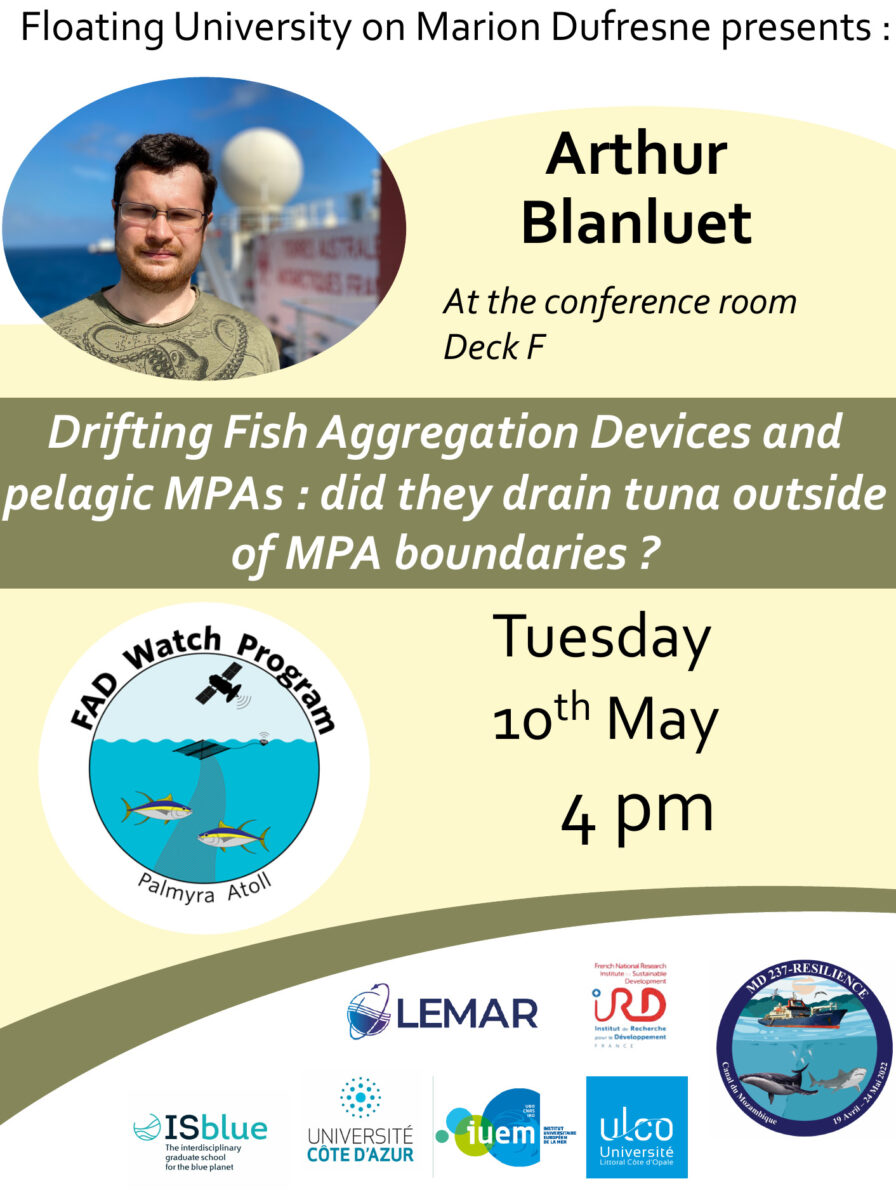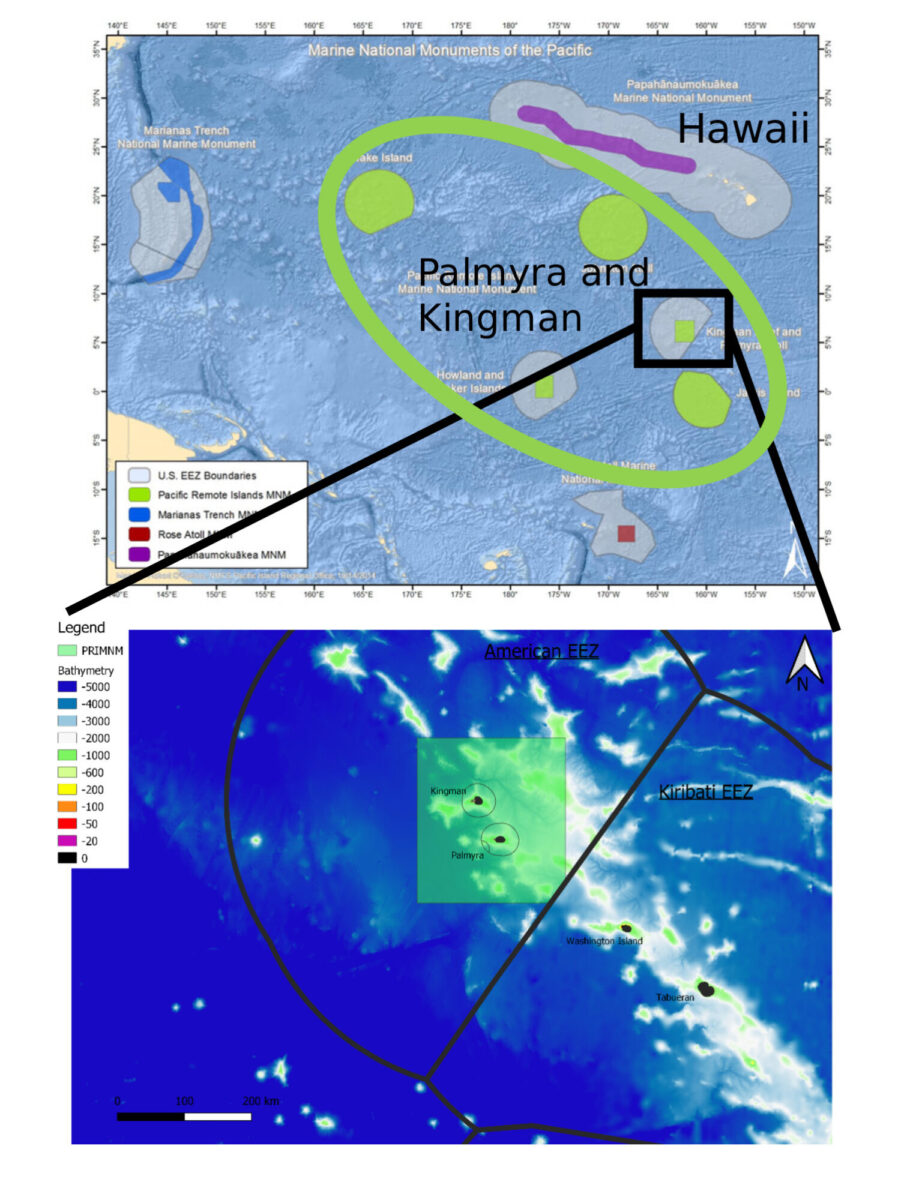Conference by Arthur Blanluet – Drifting Fish Aggregation Devices and pelagic MPAs: did they drain tuna outside of MPA boundaries?

May 10th, 2022, R/V Marion Dufresne, off the South African coast
Author: Angèle Nicolas

Arthur Blanluet is a post-doc in acoustic and marine ecology at the Queensland University in Brisbane. On May 10th, he gave us a talk about the behavior and distribution of tuna in the Marine Protected Area of the Palmyra Atoll by analysing data from Floating Aggregation Devices.

Drifting Floating Aggregation Devices (dFADs) are composed of a raft and a tail made of old net that slow the device down and attract fishes, especially tuna. This fishing technique is very efficient, tones of tuna gather around the dFADs. Tuna are thought to aggregate around dFADs to meet and form a school, rather than hunting. These structures mainly target skipjack tuna. However, it also attracts yellow fin and Big eye tuna juveniles that are endangered species, and can cause bycatch of sharks, turtles or marine mammals. dFADs are also a threat for coral reefs when they land into them.

Arthur’s area of interest is the Pacific Remote Island Marine National Monument, a large United States Marine Protected Area (MPA) created in 2009. In this zone there is an agreement between “The nature Conservancy” an non-profit organization, and US fishing companies to make the dFADs data accessible for research studies (position and acoustic of the devices entering the zone). The objectives of this partnership is to detect the dFADs before they beach on the Atoll and, what Arthur is working on, to study the behavior of tuna in the MPA.
The dFDAs carry echosounders that “scan” the water column from 3 to 115m. The acoustic signals detecting tuna below the FADs are directly converted into potential biomass of skipjack tuna and sent to scientific database by satellite.

The results showed that 178 dFADs crossed the MPA for the past 9 months, only 3 beaching were recorded. The day/night cycle appeared to have a great impact on tuna depth distribution; most of the fish gather at dawn in the deepest layers (80-115m). The presence of island doesn’t seem to influence the presence of tuna: no relationship has been found between the biomass of tuna and the distance from the island. Apparently neither did the chlorophyll-a or the thermocline depth. On the other hand, statistical analyses demonstrate that current velocities and the sea surface temperatures estimated by satellite seems to have a positive impact on tuna biomass. In addition to it the time spend by a FAD in the MPA only have a low impact on the tuna biomass and no spillover from the MPA seems to occur.
In the future, the data from inside the MPA will be compared to data outside the MPA (for exemple at the scale of the Exclusive Economic Zone) in order to see if the aggregation rates are the same in these two zones. The results will also be compared to tuna biologging (similarly to the tag data studied by Gwenith Penry on whales) to have a more precise view on the fish distribution. Additionally data about lower component of the pelagic ecosystems could be measured using acoustic on saildrones.

 Attention, vous utilisez un navigateur peu sûr !
Attention, vous utilisez un navigateur peu sûr !